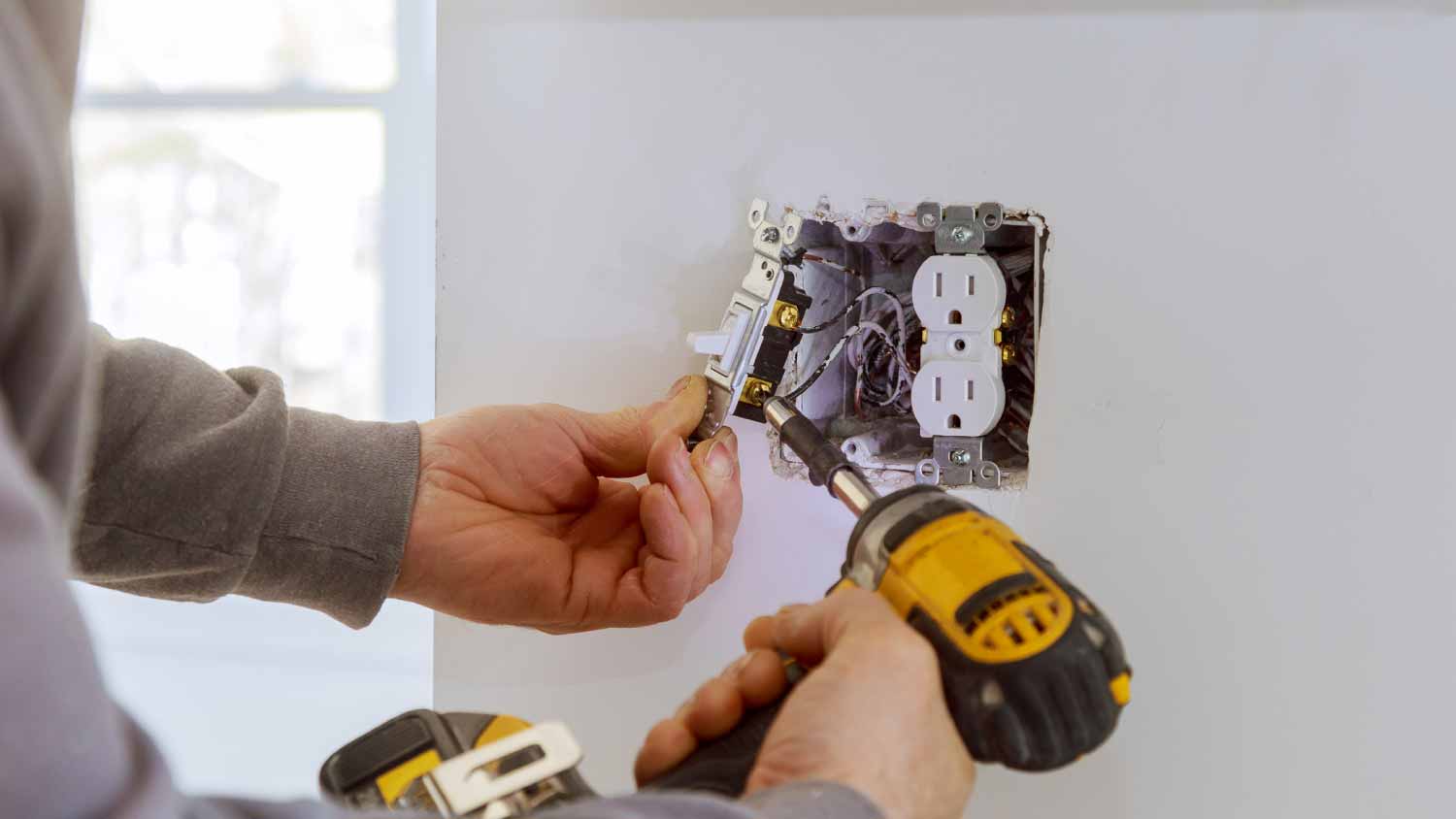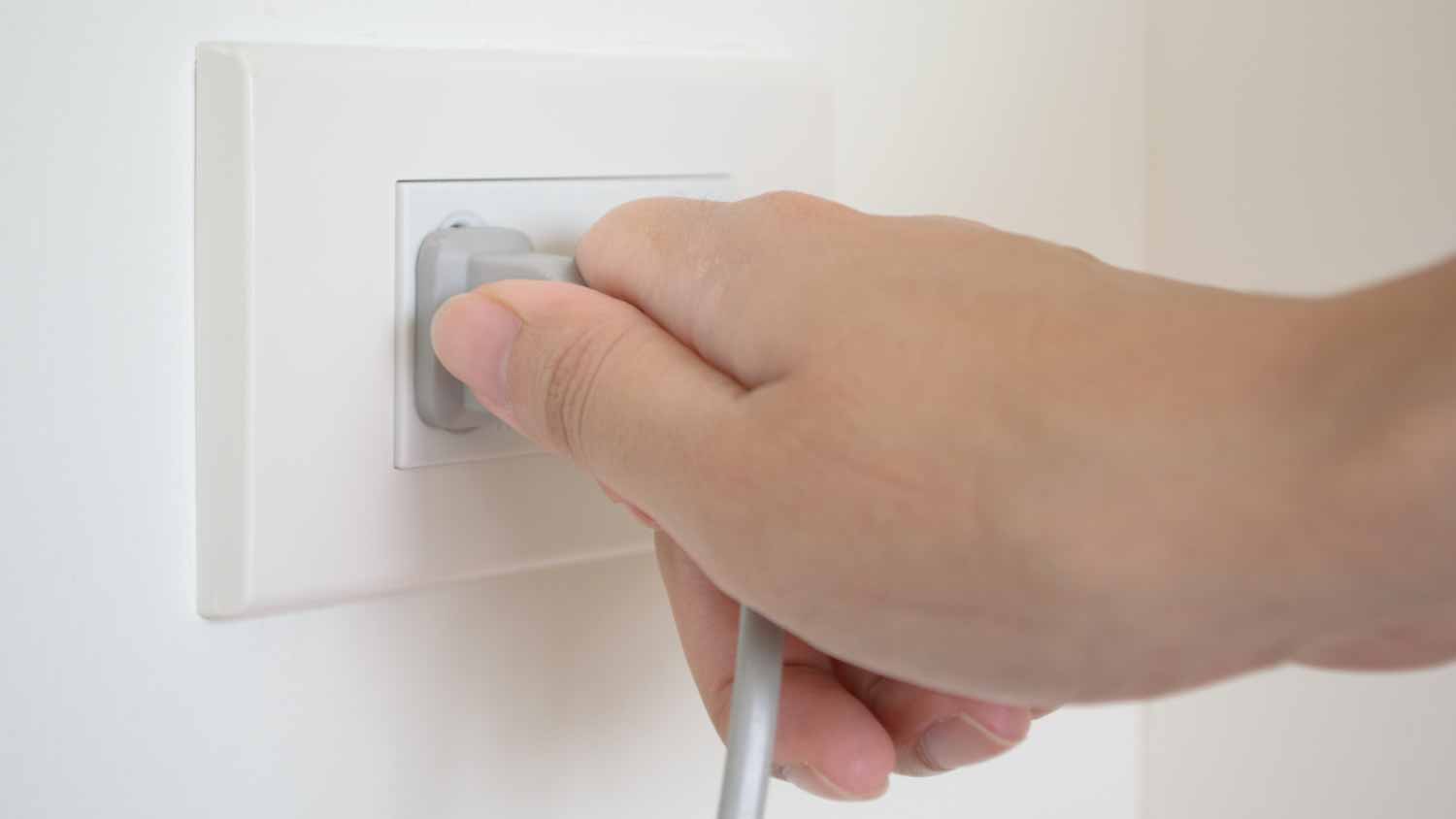
Find out how an EV charger installation can make your electric vehicle ownership experience even better. Learn about costs, benefits, and more.
Use these troubleshooting tips to restore the power


Your lights may be on a different power circuit than your outlets.
Appliances can cause your outlets to stop working.
Damaged outlets are a fire hazard.
Are the outlets in a room not working, but the lights are on? An electrical issue like this can be a head-scratcher, but chances are, there’s a straightforward explanation for why it’s happening. Here are some common reasons why the outlets in a room aren’t working, plus tips to fix the problem.

In some cases, your lights and outlets may be on different circuits, which could explain why the lights are still on even though the outlets are dead. It’s possible that the circuit for the outlets got overloaded and tripped the circuit breaker. Plugging in too many high-amperage appliances into one outlet can cause a circuit overload. Appliances such as irons, vacuums, hair dryers, and fans can cause circuit breakers to trip.
Short circuits and ground faults can also cause the circuit breaker to trip and result in your outlets in the room not working. To restore power, find your electrical box and check to see if any of the breakers are in the middle or “off” position. Any breaker in the middle position should be first switched to the “off” position before you flip it back on.
Be careful when switching breakers because sometimes they can spark when you flip them back on. Wear safety goggles, and make sure you aren’t touching a wet surface or have wet hands when you do it. After you reset the breaker, check to see if your outlets are working.
This is a quality electrical company with very professional and well-trained technicians. They installed new switches, outlets and light fixtures in my 2nd floor, removing the knob and tube wiring and installing new grounded lines. I will be recommending them to all my friends and family.

If the outlets in the room aren’t working but the lights are on, a bad outlet could be to blame. Sometimes, outlets are “daisy-chained” together. This means outlets are connected to one another in a series. So, if one stops working, the others will not work either. An electrician has a tool that can find which outlet is bad in order to replace it.
GFCI outlets are designed to prevent electrical shock. They are typically located in areas of the house with water or moisture, such as bathrooms, kitchens, laundry rooms, and garages. GFCI outlets have buttons on the front that say “test” and “reset” and, if they have been tripped, they stop working.
You can usually restore power by resetting them, but before you do, double-check that no moisture or water is near the outlet and that you aren’t touching a wet surface. Then, unplug everything from the outlet and press the “reset” button on the front of the outlet. You should hear it click as it resets. Plug in your device to see if the outlet is working.
If the GFCI outlet trips again after turning your appliance on, reset it again and try a different device to see if it continues to trip. That way, you can determine if there is an issue with the outlet or if it’s because of the appliance you are using.

Another possible reason outlets in a room are not working but the lights are on is that you have a faulty appliance. If the outlets and lights are on different circuits, the defective appliance could have tripped the breaker that feeds the outlets, causing the outlets to stop working.
Unplug and inspect each appliance or device for electrical damage. If they have signs of damage or the plastic looks melted, then you should not plug them back in.
Make sure you also check the outlets for damage. If they look melted, have an odor, or you notice black char at the sockets, then you should not use them and have them replaced.
As long as nothing appears to have damage, you can reset the breaker and test each device by plugging them in one at a time. This can help you identify which appliance is causing your outlets to stop working.
According to data from Angi customers, 36.4% of electrical switch, outlet, and fixture jobs are emergencies, which require immediate service and repair. This includes active sparking, smoke coming out of the outlet, and a persistent burning smell. On the flip side, 63.6% of jobs are non-emergency work. If you need emergency electrical service, you’ll pay more in labor—sometimes double the standard hourly rate in your area.
As long as there are no wiring problems, replacing an outlet is a straightforward, simple task that will take less than 30 minutes for most electricians. Unfortunately, because most electricians charge an hourly minimum, you’ll still pay between $100 and $200 for a professional to replace an outlet.
If you have some electrical experience, you can replace an outlet yourself, saving lots of money on labor.
However, electricity can be deadly, and bad wiring can present a fire hazard. Never do any electrical work without first turning off the power at the circuit breaker and then using a multimeter or voltage tester to ensure the outlet is powered down.
If you’re not comfortable with wiring or your outlet has significant damage or other issues, call a local electrician to do the work.
From average costs to expert advice, get all the answers you need to get your job done.

Find out how an EV charger installation can make your electric vehicle ownership experience even better. Learn about costs, benefits, and more.

Electrical subpanels allow you to use appliances and electronics safely. This cost guide explains the important factors to consider when installing a subpanel.

The cost to move an electric meter depends on how far you’re moving it, whether it needs replacing, and the cost of labor near you.

Here’s what you need to know to reset an outlet without a reset button. Follow this guide for resetting an outlet in a snap.

Is it acceptable to have an electrical panel in a bathroom? Keep reading to find out the best location for this essential feature.

Learn a new skill and find out how to wire a light switch (safely) in your own home. This is one project that’s sure to light up your day.